The pages of the Book of Isaiah reflect in: a remarkable way the great events of the Prophet’s day. The various prophecies, uttered by Isaiah under the inspiration of the Holy Spirit, had a direct bearing on what was then happening or was soon to take place. The prophecies were a message to the people among whom the Prophet lived.
Some have thought from the words of I Peter 1:10-12 that the prophecies were for a distant future only. But a careful reading of the passage will show that it was the salvation through grace of which the prophets enquired. The sufferings of Christ were a mystery to them, and they” prophesied of the grace” that should come unto us, and in these things they ministered unto us, but this does not mean the prophecies were devoid of meaning to the people of the Prophet’s time. On the contrary, the prophecies had a direct message to those to whom they were spoken, as well as to us of to-day. God has so filled His word With meaning that it always has had a message for those to whom it has come, and still to this day, “ALL Scripture is … profitable for doctrine, for reproof, for correction, for instruction in righteousness.”
When the utterances of Isaiah had a message for the people of his time, it would not be surprising to find the important happenings of that day referred to in the prophecies. Providentially we are well supplied from the Assyrian tablets with records of the great events contemporary with the Prophet. By following the history of that time in the cuneiform inscriptions, and comparing these with the Book of Isaiah, it becomes possible to affix the correct date to many of Isaiah’s prophecies. Before proceeding with this comparison it is necessary to first examine the chronology of that period.
The main difficulty in the chronology of this period is the supposed contradiction between II Kings 18:9, 10 and vs. 13, which has been pronounced “quite irreconcilable.” The first verse states, “And it came to pass in the fourth year of king Hezekiah, which was the seventh year of Hoshea son of Elah king of Israel, that Shalmaneser king of Assyria came up against Samaria and besieged it …“; and verse 13 says, “Now in the fourteenth year of king Hezekiah, did Sennacherib king of Assyria come up against all the fenced cities of Judah, and took them.” This makes it look as if but ten years elapsed between the beginning of the siege of Samaria and Sennacherib’s invasion of Judah, while the Assyrian inscriptions make the interval to be twenty-three years. Shalmaneser V began the siege of Samaria (II Kings 18:9) and the siege lasted three years. A year before the siege ended, Sargon succeeded Shalmaneser, and he records the taking of the city of Samaria in his first year (721 BC).
After this he continued to reign sixteen years, and was then succeeded by his son Sennacherib (705 B.C.), who invaded Judah after reigning four years. This makes a total of twenty-three years, thus:
City of Samaria besieged for 3 years
Sargon afterwards reigned for 16 years
Sennacherib invaded Judah after reigning 4 years
Total 23 years
However, it can soon be shown that the Scriptures also make this interval one of twenty-three years. Sennacherib’s invasion began in 701 B.C. (Assyr. Epon.). As this was in Hezekiah’s fourteenth year (II Kings 18:13), we may assume that his fourteenth year covered the larger part of 702 B.C. and the earlier part of 701 B.C.
Hezekiah’s first year would accordingly begin in the first part of 715 B.C. Ahaz, Hezekiah’s predecessor, reigned sixteen years (II Kings 16:2), but as these reigns are given in whole years (fractions of years being omitted unless the reign was under six months), we are at liberty to assume the reign was almost sixteen and a half years, so that the accession of Ahaz may be placed towards the close of 732 B.C. This was the seventeenth year of Pekah king of Israel (II Kings 16:1), so Pekah’s reign began in 749 B.C. He reigned twenty years (II Kings 15:27) that is, from 749 B.C. to 729 B.C.
Pekah was murdered by Hoshea who succeeded him. II Kings 17:1 tells us Hoshea reigned nine years, but as it was still within the ninth year when Samaria was taken and his reign ended (II Kings 17:6), it is evident he did not complete his ninth year. Samaria accordingly fell slightly over eight and a half years after Hoshea had seized the throne in 729 B.C., which brings us to the latter part of the Jewish year 721 B.C. (very early spring of 720 B.C. by our calendar year). This calculation brings us precisely to the year ill which Sargon king of Assyria claims to have taken the city, according to the inscription beginning with the words: “In the beginning of my reign (722B.C.) and in the first year of my reign (721 B.C.) … Samaria I besieged and took.” (Rogers: Cuneiform Parallels to the Old Testament, p. 326.) Thus it is seen the Assyrian records agree with the Scripture chronology.
From the above reckoning it is clear Hezekiah’s reign began in 715 B.C., yet II Kings 18:1 tells us he began to reign in the third year of Hoshea, or 727 B.C. The best explanation seems to be that in 727 B.C. Hezekiah began to reign as a co-regent with his father Ahaz. In 715 B.C. Ahaz died and Hezekiah then became sale regent. The dates in II Kings 18:9-10 are counted from the beginning of Hezekiah’s co-regency. Co-regencies were not uncommon among the Hebrew kings. Some of the better known instances are: Solomon with David, Jehoram with Jehoshaphat, and Jotham with Uzziah.
It appears that Ahaz was co-regent with his father Jotham also, for Hoshea began to reign in 729 B.C. and Ahaz succeeded Jotham only three years before this in 732 B.C., and yet we are told Hoshea began to reign in the twelfth year of Ahaz. (II Kings 17:1) This last dating must have been made from the beginning of a co-regency of Ahaz with Jotham, which evidently began in 740 B.C. Two considerations uphold this suggested co-regency.
First
The Scripture account of the wars of Ahaz with Pekah king of Israel and Rezin king of Syria (II Kings 16:5-9), and of his appeal to Tiglath-pileser IV of Assyria for help, is undated. However, the Assyian Eponym Canon ((Rogers: Cuneiform Parallels to the Old Testament, pp. 235-236,322) enables us to date these wars, and we find that Tiglath-pileser invaded Philistia in 734 B.C., and, in answer to Ahaz’ appeal, besieged Damascus two years, 733-2 B.C., and he at this time records receiving tribute from Ahaz, whom he calls Jehoahaz. So Ahaz’ wars with Pekah and Remaliah, and Tiglath-pileser’s siege of Damascus, all took place before 732 B.C., the year in which Jotham died. Ahaz was therefore the acting regent before 732 B.C., and this supports the suggested co-regency.
Second
Hezekiah was 25 years old when he began to reign, presumably in 715 B.C. (II Kings 18:2), and by adding 25 to 7I5 B.C. … we find he must have been born in 740 B.C. Now Hezekiah’s father, King Ahaz, was 20 years of age at the beginning of his reign (II Kings 16:2), and if we were to understand this to mean in 732 B.C., it would make Ahaz but 12 years old in 740 B.C. when Hezekiah was born. This is clearly out of question, and makes it necessary to find an earlier date for the beginning of Ahaz’ reign. This earlier date we have in the suggested co-regency. Then we have Ahaz 20 years of age in 740 B.C., when his co-regency began, which is the same year that Hezekiah was born. This also supports the suggested co-regency.
We have now sufficiently cleared away the Chronological difficulties to permit us to compare the Book of Isaiah with the history of his time. For this the reader should refer to the accompanying table which will help to make the comparison with contemporary events more clear.
CHAPTERS 1 TO 5
In Isaiah 1:1 we notice that the prophecies were given “in the days of Uzziah” as well as in those of later kings.
Jotham died in 732 B.C., as we have already noted, and this was after a reign of sixteen years (II Kings 15:33). Uzziah’s death and Jothan’s accession were therefore in 748 B.C., which was the second year of Pekah, king of Israel (749-729 B.C.). The first chapter of Isaiah is an introduction, evidently not written until Hezekiah’s reign, as his name is mentioned (1:1), though verses 2-31 may have been spoken I earlier.
The next section of the book, chapters 2 to 5 (inclusive), evidently were uttered before Uzziah died (cf. 6:1), and as that king died in 748 B.C., these chapters may be dated as before 748 B.C.
CHAPTER 6
This is positively dated as “In the year that king Uzziah died,” which was 748 B.C. The chapter belongs to the very beginning of Jotham’s reign.
CHAPTER 7
This prophecy was given “in the days of Ahaz,” and was just prior to the wars with Pekah of Israel and Rezin of Syria, and so was evidently during Ahaz’ co-regency, which lasted eight years, 740-732 B.C. Damascus was besieged for two years, 733-732 B.C., and the wars with Pekah and Rezin preceded this, thus being about 735 or 734 B.C.
This chapter therefore ought to be dated as about 736 or 735 B.C. So we find that the great prophecy of our Saviour’s virgin birth, which this chapter contains, was given at least 731 years before it came to pass.
The prediction in verse 8 that “within three-score and five years shall Ephraim be broken, that it be not a people,” clearly includes within its meaning the fall of the northern kingdom, but seems to also look further to some event in the reign of Esar-haddon (681-668 B.C.) now lost sight of. (cf. Ezra 4:2.)
CHAPTERS 8 TO 12
These carry on the prophecies of the virgin-born Immanuel, and are about the same date as the preceding chapter. Note in 8:2 the name of “Uriah the priest,” who seems to be the same person as “Urijah the priest” in II Kings 16:10, before the time that he listened to Ahaz’ suggestion to make another altar in the Temple. Chap. 8:6 mentions Rezin, which shows that that king was still living when this prophecy, was given. Rezin died in 732 B.C., therefore, these chapters should be dated as about 735 or 734 B.C.
CHAPTERS 13 TO 14:27
In 722 B.C. Sargon ascended the Assyrian throne, and immediately afterwards Merodach-baladan revolted in Babylon and began his twelve year reign in that city. This event would turn attention to that city, especially in those nations just brought under the hated Assyrian yoke, and also in those countries who feared the fast growing Assyrian power. The thought in many minds would be, “Will the revolt of Babylon be successful?” and Judah would watch the rebellion with great interest. At this juncture God sent His Prophet with the timely message of “The Burden of Babylon” (chap. 13:1 to 14:27), in which the failure of Babylon is foretold. God used the opportunity to also foretell the final overthrow of Babylon, but it is the immediate meaning of the prophecy as spoken to the people of the Prophet’s day which concerns us just now. They would readily understand the prediction to mean Babylon’s revolt would not be successful. “Lucifer” (14:12) would thus have an immediate application to the then king of Babylon, Merodach-baladan. However, the deeper meaning and application is to Satan, who fell through pride and led a greater revolt, not on earth, but in Heaven.
The date for this prophecy falls somewhere between 722 B.C., when Merodach-baladan revolted, and 715 B.C., the date of the next prophecy. 720 B.C. may be taken as the approximate date.
CHAPTER 14:28-32
The next prophecy is brief, but definitely dated as “In the year that king Ahaz died.” This was, as we have already seen, in 715 B.C., fourteen years before Sennacherib’s invasion of Judah.
CHAPTER 15 TO 16
The last verse of this “Burden of Moab” reads, “But now the Lord hath spoken, saying, Within three years, as the years of an hireling, and the glory of Moab shall be contemned, with all that great multitude; and the remnant shall be very small and feeble” (16:14). The words, “Within three years,” leave no room to question an immediate application of this prophecy to the Prophet’s own time. The records of Sargon tell us of this immediate fulfillment. Philistia, Judah, Edom, and Moab rebelled against Assyria, and sought the aid of Egypt.
In his eleventh year, that is, in 711 B.C., Sargon’s troops crossed the Euphrates at its flood and quelled the revolt. (Rogers: Cuneiform Parallels to the Old Testament, pp 328 - 331) This, the Prophet had said, was to be “within three years,” and three years before 711 would be in 714 B.C. Thus this prophecy falls in the year following the preceding one, which was in 715 B.C.
CHAPTERS 17 AND 18
As the last prophecy was given a year after the preceding one, so the prophecies in these chapters would seem to fall in 713 B.C., one year after the last prophecy. It is to be noted that Damascus did not join in the rebellion against Assyria which was quelled in 711 B.C., and the revolting countries very likely suffered attacks from Damascus. So “The Burden of Damascus” is given, concluding with these words, “This is the portion of them that spoil us, and the lot of them that rob us” (17:14). Chapter 18:2 would seem to have reference to the ambassadors passing forth and back between Egypt, at this time under Ethiopian rulers, and Judah and the associated nations.
CHAPTER 19
Again this prophecy seems to fall in naturally one year later than the preceding one, being thus in 712 B.C. Egypt played an important part in the affairs of the Palestinian states, and there were conflicts between Egyptian and Assyrian armies on Palestinian soil. One such conflict had been fought at Raphia in 720 B.C. The fact that these smaller states were depending upon Egypt for aid in their rebellion against Assyria, created a need for God to warn His chosen people that Egypt could not save them, and “The Burden of Egypt” is given through the Prophet, predicting that that ancient nation itself was ere long to fall. Judah lay between Egypt and Assyria, conquered and re-conquered by the Assyrians, but constantly incited to revolt by the Egyptians. God foretells the day of universal peace when Egypt and Assyria will both serve the one true God, with restored Israel between’ them as “a blessing in the midst of the land” (19:23-25).
CHAPTER 20
This chapter is dated as “ In the year that Tartan came unto Ashdod (when Sargon the king of Assyria sent him), and fought against Ashdod, and took it.” This is the campaign, spoken of before, when Sargon quelled the revolt of Philistia, Judah, Edom, and Moab, in 711 B.C. Evidently Sargon himself did not come against the city Ashdod, but sent Tartan “commander-in-chief” to besiege the place. It may be remarked that the method used by the Prophet in dating this prophecy is very like the language of the notes attached to some of the Assyrian Eponym Lists, and can be said to reflect Assyrian influence.
In this prophecy it is definitely predicted that the Assyrians would make the conquest of Egypt, which came to pass fifty years later when Ashur-banipal sacked Thebes in 661 B.C.
CHAPTER 21:l-10
In verse 9 of this passage it is revealed to the Prophet that “Babylon is fallen, is fallen.” It will be remembered that Babylon under Merodach-baladan had revolted from under the Assyrian domination and that soon after “_The Burden of Baby_lon” had been pronounced indicating that Babylon would fail. For twelve years the efforts of Assyria to re-subdue the city were successfully resisted, but finally in the year 710 B.C. Sargon was victorious, Merodach-baladan fled to Elam, and Babylon fell into Sargon’s hands. This was an event of great importance, and God again used the opportunity of general interest in Babylon to speak of a greater calamity that was yet to come upon the city. This prophecy with its reference to the fall of Babylon, which the cuneiform texts record as occurring in Sargon’s twelfth year, is thereby dated as 710 B.C., again a year after the former prophecy.
CHAPTER 21:11-12, AND 13-17
In the rest of this chapter there are two more prophecies, “The Burden of Dumah” and “The Burden of Arabia.” There does not appear to be anything in the first of these by which it can be dated. It may be provisionally dated as 709 B.C., a year after the previous prophecy. “The Burden of Arabia” contains the prediction, “Within a year, according to the years of an hireling, and all the glory of Qedar shall fail …” (vs. 16). This probably refers to some campaign into Arabia about the year 708 or 707 B.C., but there does not seem to be any surviving cuneiform record of it. Provisionally we may put it as 708, but this must remain uncertain so long as the invasion of Qedar in Arabia is unknown.
CHAPTER 22
This “Burden of the Valley of Vision” pictures the busy stir and excitement attendant upon Judah’s revolt against Assyria (II Kings 18:7), and speaks of the preparations which Hezekiah the king was making against the attack from Assyria which all knew would surely come (Isa. 22:8-11). But the inspired Prophet did not share the people’s enthusiasm or the nation’s joy; instead he speaks of “a day of trouble,” of war, and of many dying (vs. 5-7, 14). Also, there is a prophecy against Shebna, ruler of the king’s house, stating that his place would be taken by Eliakim (vs. 15, 20, 22). Later, when Sennacherib invaded Judah, we learn that Eliakim did then occupy the position formerly held by Shebna (Isaiah 36:3). The date of Hezekiah’s rebellion against Assyria is not given, but it may have been just after Sennacherib ascended to the throne in 70S B.C. This chapter may therefore be dated as in that year.
CHAPTER 23
Tyre joined in the revolt against Assyria, and through Isaiah is given “The Burden of Tyre,” declaring that Tyre would accomplish no more than did Babylon in her revolt (vs. 13-14). The mention of the seventy year period, when Tyre would be forgotten, does not seem to have any clear, immediate fulfillment, but this does not affect the chronology of the Book of Isaiah. Chapter 23 may be dated as soon after the preceding prophecy, that is, about 70S or 704 B.C.
CHAPTERS 24 TO 35
These chapters belong to the years preceding Sennacherib’s invasion, and must therefore be dated as 704-702 B.C. Chapters 30 and 31give fresh warning of the vainness of trusting in the shadow of Egypt, but give also definite promise of help direct from the Lord, and end with a prediction of defeat for Assyria.
CHAPTER 36:1 TO 37:37
In 701 B.C., towards the close of Hezekiah’s fourteenth year, the expected invasion came. Sennacherib was victorious as he advanced southwards, and entering Judah he took forty-six of Hezekiah’s cities. It was “a day of trouble,” as Isaiah had foretold (chap. 22:5; 37:3), but God kept the promise he had given, for Assyria was defeated by the angel of the Lord smiting 185,000 of Sennacherib’s army.
CHAPTER 37:38
The death of Sennacherib did not occur until 681 B.C., thirty years after the invasion. This is proof that Isaiah lived well into the reign of Manasseh king of Judah, and that he did not complete the writing of his book of prophecies until after that date. This passage it should be noted is not in chronological order, but is an event which occurred after those of the next two chapters.
CHAPTER 38
This chapter opens with the words, “In those days,” quite evidently meaning the time immediately after Sennacherib’s invasion. Its date therefore is 701 B.C.
CHAPTER 39
The first words of this chapter are: “At that time Merodach-baladan, the son of Baladan, king of Babylon, sent letters and a present to Hezehiah: for he had heard that he had been sick, and was recovered.” It will be remembered that Merodach-baladan had already led a revolt in the days of Sargon, lasting twelve years. At that time God had declared the Burden of Babylon through Isaiah, and had later given another short prophecy upon the defeat of Merodach-baladan and the fall of Babylon into Sargon’s hands. These prophecies were a warning to Judah not to form any alliance with Babylon.
The warnings seem to have fallen upon deaf ears. From the Assyrian records we learn that soon after Sennacherib began to reign in 705 B.C. Babylon again revolted and made Marduk-zakir-shum their king. He reigned one month, when Merodach-baladan, who had fled to Elam, returned and, taking the throne of Babylon, reigned nine months in 702 B.C. Sennacherib then defeated him and made Bel-ibni the king, thinking he would remain faithful to Assyria.
But while Sennacherib was engaged with his wars in Syria and Palestine in 701, Bel-ilni joined forces with Merodach-baladan and a Chaldean, named Marduk-ushezib, and a fresh revolt broke out. It was at this time that Merodach-baladan, now joint-ruler in Babylon, and therefore rightly called in Isaiah “king,” sent his embassy to Hezekiah. He hoped to gain as an ally one who had had some success in rebelling against Assyria, though this was not due to Hezekiah’s power, but to God’s.
He had heard of Hezekiah’s illness (Isaiah 39:1) and of the connection with it of the strange wonder of the sun returning ten degrees (II Chronicles 32:31), which phenomenon the astronomers of Babylon would not have failed to notice. Hezekiah received the messengers gladly, in spite of the warnings against alliance with Babylon, and afterwards is told by Isaiah of the Babylonian captivity to come later.
The fact that all three of the Biblical records, Kings, Chronicles, and Isaiah, place the arrival of this Babylonian embassy after Sennacherib’s invasion is proof that it was sent in connection with the revolt of 701-700 B.C., not the revolt of 702 B.C. This chapter is therefore dated as 700 B.C.
CHAPTERS 40 TO 46
This large portion of Isaiah is dealt with under one paragraph, as in it less notice is taken of current events in the Prophet’s time; instead the prophecies are more concerned with the Babylonian captivity, so positively predicted in the preceding chapter, and with the Messiah.
Cyrus, in some respects a type of the Messiah, is foretold by name (44:28; 45:1). But chapters 46 and 47 have some reference to Sennacherib’s destruction of Babylon in 689 B.C. He was angered by the city’s repeated rebellions, and laid it waste. This event is reflected in the words: “Bel boweth down, Nebo stoopeth, their idols were upon the beasts, and upon the cattle: your carriages were heavy loaden; they are a burden to the weary beast. They stoop, they bow down together; they could not deliver the burden; but themselves are gone into captivity” (46:1, 2). Sennacherib at this time left the Babylonian throne vacant, and this too is referred to. “Come down, and sit in the dust, O virgin daughter of Babylon, sit on the ground: there is no throne, 0 daughter of the Chaldaeans …” (47:1). There was no king in Babylon after this until Sennacherib died eight years later. This was not the fulfillment of this prophecy, but the current event which gave it point to the people of that day. These chapters therefore belong to about the year 689 B.C.
Conclusion
We have now gone through the Book of Isaiah and examined the various prophecies in the light of the contemporary history, and by this means have given dates to many portions. The earliest date is “before 748 B.C.” for the first few chapters, the latter ones being about or soon after 689 B.C., and the latest event mentioned in the Book is dated “681 B.C.” (37:38). As this covers a total of over 67 years, Isaiah must have lived to a ripe old age, something like 90 years, before he died during the reign of Manasseh.
We have seen also in these prophecies how God Himself used those events which were occupying public interest as a foundation thought for His messages. But the thought in these messages again and again leaps from the current event or the near fulfillment, to the far distant times. The words are so arranged and so carefully chosen that, while they had an immediate application, they deal equally well with the greater events which were still future. This was not accomplished by making the meaning vague, for the statements are clear and positive. Only the God Who sees the end from the beginning could thus foretell: only the God Who gave man speech could be this perfect master of language that so many prophecies, lessons, and meanings could be all accurately combined into one message, even into the same words. Man alone could not have written the Book of Isaiah, but a man Isaiah, directly inspired by the Spirit of God could - and did.
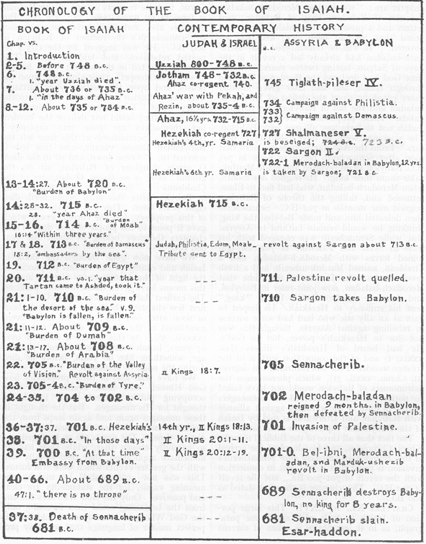
By David J. Gibson
Copyright 2004, 2019 CanBooks





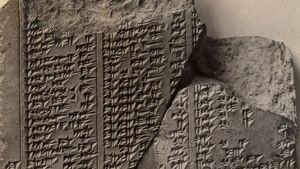



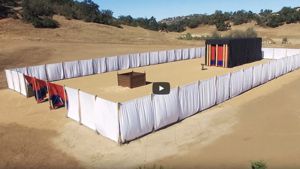
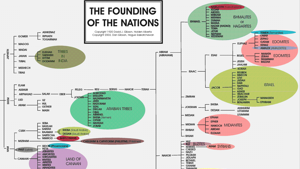

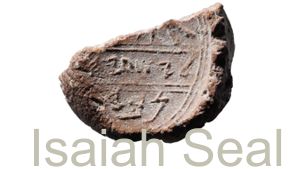
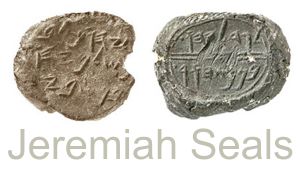







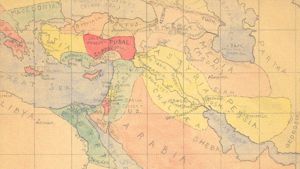


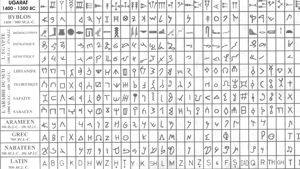
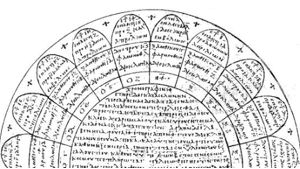
Page Discussion
Membership is required to comment. Membership is free of charge and available to everyone over the age of 16. Just click SignUp, or make a comment below. You will need a user name and a password. The system will automatically send a code to your email address. It should arrive in a few minutes. Enter the code, and you are finished.
Members who post adverts or use inappropriate language or make disrespectful comments will have their membership removed and be barred from the site. By becoming a member you agree to our Terms of Use and our Privacy, Cookies & Ad Policies. Remember that we will never, under any circumstances, sell or give your email address or private information to anyone unless required by law. Please keep your comments on topic. Thanks!